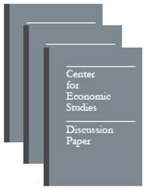Receipt of Public and Private Food Assistance Across the Rural-Urban Continuum Before and During the COVID-19 Pandemic: Analysis of Current Population Survey Data
Receipt of Public and Private Food Assistance Across the Rural-Urban Continuum Before and During the COVID-19 Pandemic: Analysis of Current Population Survey Data
Abstract
Background: The nutrition safety net in the United States is critical to supporting food security among households in need. Food assistance in the United States includes both government-funded food programs and private community-based providers who distribute food to in need households. The COVID-19 pandemic impacted experiences of food security and use of private and public food assistance resources. However, this may have differed for households residing in urban versus rural areas. We explored receipt of Supplemental Nutrition Assistance Program (SNAP) benefits or food from community-based emergency food providers across a detailed measure of the rural-urban continuum before and during the COVID-19 pandemic.
Methods: We linked restricted use Current Population Survey Food Security Supplement data to census-tract level United States Department of Agriculture Rural-Urban Commuting Area codes to estimate prevalence of self-reported SNAP participation and receipt of emergency food support across temporal (2015-2019 versus 2020-2021) and socio-spatial (urban, large rural city/town, small rural town, or isolated rural town/area) dimensions. We report prevalences as point estimates with 95% confidence intervals, all weighted for national representation.
Results: The weighted prevalence of self-reported SNAP participation was 8.9% (8.7-9.2%) in 2015-2019 and 9.1% (8.5-9.5%) in 2020-2021 in urban areas, 11.4% (10.8-12.2%) in 2015-2019 and 11.6% (10.5-12.9%) in 2020-2021 in large rural towns/cities, 13.4% (12.3-14.6%) in 2015-2019 and 12.3% (10.5-14.5%) in 2020-2021 in small rural towns, and 9.7% (8.6-10.9%) in 2015-2019 and 10.9% (8.8-13.4% )in 2020-2021 isolated rural towns. The weighted prevalence of self-reported receipt of emergency food was 4.9% (4.8-5.1%) in 2015-2019 and 6.2% (5.8-6.5%) in 2020-2021 in urban areas, 6.8% (6.2-7.4%) in 2015-2019 and 7.6% (6.6-8.6%) in 2020-2021 in large rural towns/cities, 8.1% (7.3-9.1%) in 2015-2019 and 7.1% (5.7-8.8%) in 2020-2021 in small rural towns, and 6.8% (5.9-7.7%) in 2015-2019 and 8.5% (6.7-10.6%) in 2020-2021 isolated rural towns.
Conclusion: Households in rural communities use public and private food assistance at higher rates than urban areas, but there is variation across communities depending on the level of rurality.
Others in Series
Working Paper
Working Paper
Working Paper




